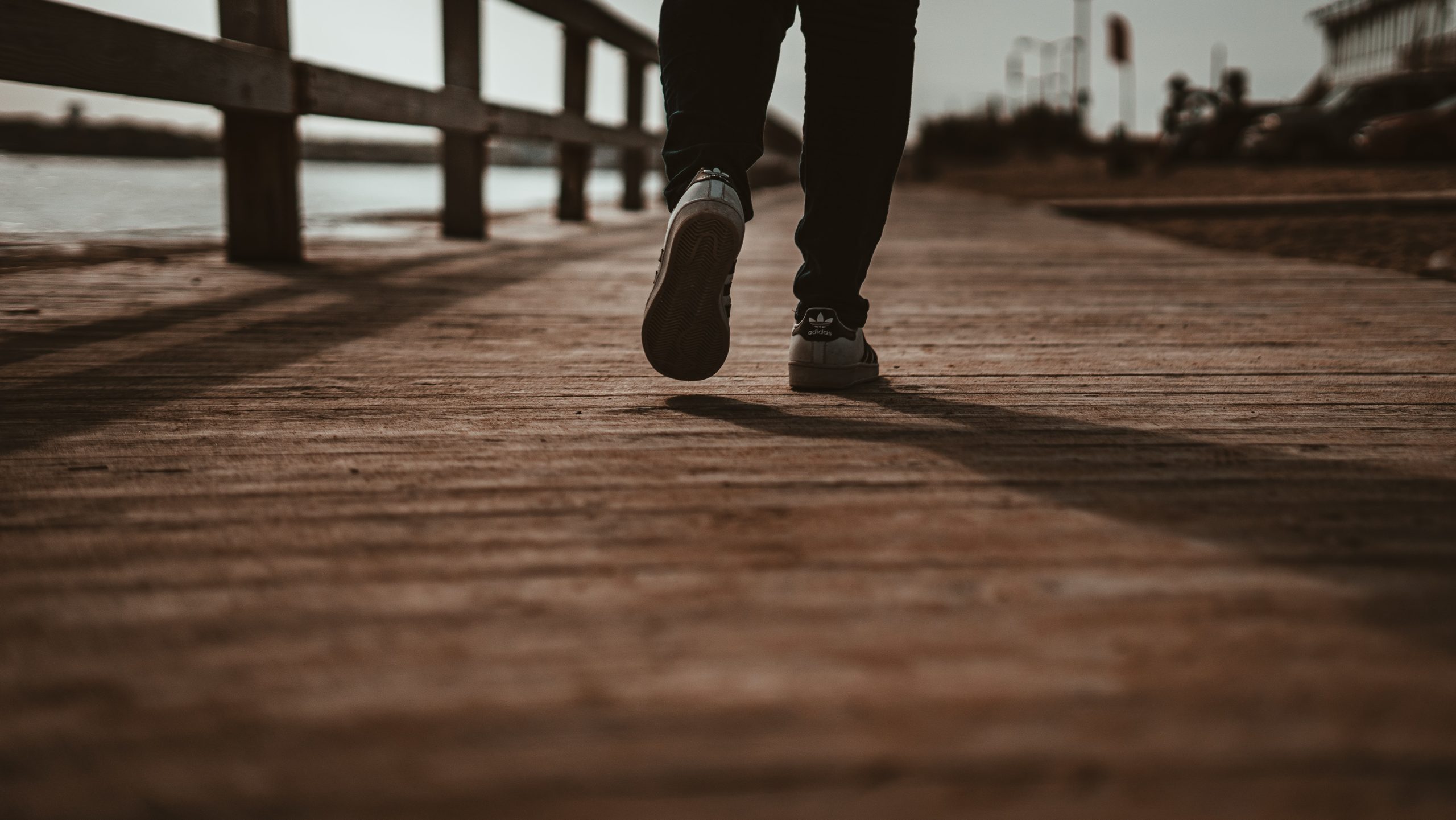
Published December 2022
Summary
Falls are a major cause of lost independence in people with Parkinson’s. Dr Alison Yarnall is trialling a new method to reduce fall risk and improve walking in people with Parkinson’s, which involves non-invasive stimulation of the vagus nerve. If successful, the already-approved device – gammaCoreTM – could be rapidly rolled out to increase independence and improve quality of life for people with Parkinson’s.

We know from talking to people with Parkinson’s that gait and falls is one of their top research priorities.
Dr Alison Yarnall, Principal Investigator
In my work as a geriatrician, one of the things I see most often in people with Parkinson’s is problems with gait, or the way we walk. These problems underpin the risk of falls, which is a major cause of lost independence, and we know from talking to people with Parkinson’s that gait and falls is one of their top research priorities.
Our approach to solving this problem lies in a brain chemical called acetylcholine, which, in addition to the more familiar dopamine, declines in Parkinson’s. Acetylcholine has many roles in the body. It is released by motor neurons to activate muscles, which means that all of the body’s movements rely on it.
We wanted to improve acetylcholine levels, and therefore movement, in people with Parkinson’s, but without the use of medications.
People with Parkinson’s are likely to already be on complex medication regimes and may need to take several different medications multiple times per day. Drugs that are used to boost acetylcholine levels also come with side effects, which we wanted to avoid.
A non-invasive treatment method
One way we think we can increase acetylcholine levels without using drugs is by stimulating the vagus nerve in the neck using gentle electrical pulses. This could be transformative for people with Parkinson’s as a non-pharmacological, low-cost, and simple method of improving gait and walking ability.
Luckily, this technology is already available. We use a small device, about the size of an electric shaver, called gammaCore™ to stimulate the vagus nerve. The device is easy to use and people with Parkinson’s themselves or their carers can deliver the electrical impulse safely at home.
Previously, we conducted a proof-of-concept study in which 30 people with Parkinson’s used gammaCore™. With just a single stimulation we saw signs of improvement in measures of gait, which we know from our previous work is likely to be underpinned by acetylcholine levels.
The trial so far
We are now recruiting for a larger trial involving 40 people with Parkinson’s who will be randomly allocated to receive vagus nerve stimulation with the gammaCore™ or a ‘sham’ placebo device which causes a buzzing sensation on the skin but does not stimulate the vagus nerve. The gammaCore™ devices have kindly been donated to us by the manufacturer, electroCore, but they have no intellectual input into the study.
Participants will use the device for two minutes, twice a day, for 12 weeks and we will measure changes to a range of outcomes including gait and walking ability, a measure of blood acetylcholine levels, memory tests, and overall disease severity.
We’ve already started recruitment and I’m pleased to say we’ve just recruited our 20th participant. Participants will also be actively involved in feeding back on the intervention by taking part in focus group discussions, which will help us to shape future studies.
Involving patients
Patient engagement has been an important part of this work from the outset. We worked with the patient and public involvement (PPI) research network at Parkinson’s UK, who are co-funding the trial along with the Dunhill Medical Trust, before starting recruitment.
The insights we gained from this group were invaluable, and really showed us just how important walking is for people living with Parkinson’s.
Walking is fundamental to quality of life. Without the ability to walk, people with Parkinson’s can become housebound, isolated and depressed. Finding a simple way of improving walking would mean so much more than just reducing falls.
Comment from member of Patient and Public Involvement (PPI) group, Parkinson’s UK
Moving forward with the trial has been a challenge during COVID, but the Dunhill Medical Trust have been fantastic, very supportive and understanding of delays due to the pandemic. As a geriatrician, it’s great to see a funding body supporting research in older people and the problems that older people face. I’ve also been lucky to be supported by the NIHR Newcastle Biomedical Research Centre (BRC) and Clinical Ageing Research Unit (CARU), where I’m based.
Hope for the future
We hope that if we show some benefit in Parkinson’s, this approach may be applicable to other age-associated disorders.
Dr Alison Yarnall
We hope that positive results from the trial could lead to real changes for patients. The gammaCore™ device is already licensed and approved in the UK as a treatment for headache disorders. This means that, with positive results from the trial, we could move quickly towards its clinical use for improving gait in people with Parkinson’s.
After this trial, we would aim to move towards a phase III, multicentre study across the UK. If we’re successful, we could see patient benefit within the next five to 10 years – much quicker than if it was a completely new device.
We’re also hopeful that this treatment approach could be useful for other disorders associated with age. We know that other diseases, such as Lewy body dementia and Alzheimer’s disease, share similar biological pathways. Sowe hope that if we show some benefit in Parkinson’s, this approach may be applicable to other age-associated disorders.
Find out more
You can read more about Alison and her research on Newcastle University’s Biomedical Research Centre website.

